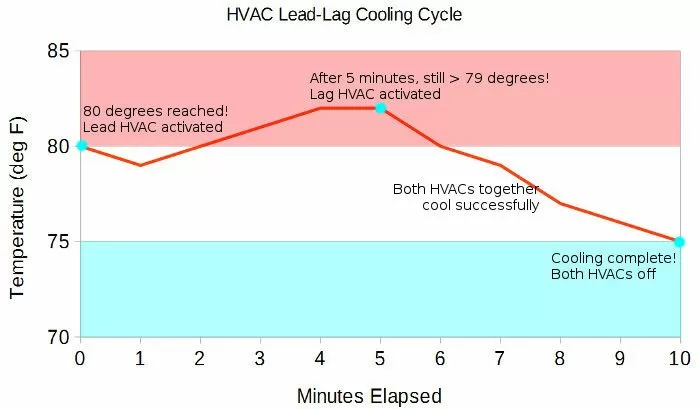Download our free Monitoring Fundamentals Tutorial.
An introduction to Monitoring Fundamentals strictly from the perspective of telecom network alarm management.
1-800-693-0351
Have a specific question? Ask our team of expert engineers and get a specific answer!
Sign up for the next DPS Factory Training!

Whether you're new to our equipment or you've used it for years, DPS factory training is the best way to get more from your monitoring.
Reserve Your Seat TodayYour HVAC system is your best defense against equipment overheating. But you need a simple way to manage it efficiently. If you run your system too much, it could lead to high energy costs and wear-and-tear on your HVACs. If you don't run them enough, temperatures get so high that your service could be affected.
Having multiple HVACs at a single location gives you cooling flexibility. You don't have to run all the units when only one will do, but you can run them all simultaneously when you're fighting a large load of heat transfer.
Once you have multiple units, however, you need a controller to activate them appropriately and rotate them over time. This is known as a "lead-lag" controller (One "lead" HVAC activates first (phase lead), then others activate after a "lag" (phase lag) if necessary).
As important as lead-lag is for your HVACs, the logic really doesn't need to be complicated. Very simple algorithms give you tremendous benefits without the risk of user confusion.
Simple lead-lag logic used by a smart controller:

Notice that, with this logic, you only need to choose two numbers:
If cooling isn't your main concern, a lead/lag system can also be used for heating in very cold climates. The best smart contollers will offer "auto" mode, which will either cool or heat as needed without you manually having to switch modes.
This system is easy to understand and still optimizes your HVAC usage for energy savings and long-term HVAC health.
The key is to run your HVACs only when necessary to be efficient. But efficiency can be difficult to pin down. How can you spot opportunities to save money?
You could do long-term analysis on your equipment, but that requires comparing temperature trends, HVAC run times, and energy bills. This process is even harder if you don't have a lead monitoring equipment that automatically logs temperature and HVAC run times and action level.
Paired with sensors, the HVAC Controller can monitor cooling systems, monitor lead/lag functions, and alert you at the first sign of trouble via text and email alerts.
Skip the complicated logging and analysis and get a smart controller. A smart controller remotely and efficiently controls your HVAC systems to run at an optimal level - even automatically making adjustments as necessary. Using a series of preset thresholds, smart controllers will control lead/lag operations and log HVAC run times. A good smart controller will come with analytic tools and testing procedures built into the interface.
With a smart controller, such as the high-performance HVAC Controller G3 from DPS Telecom, you no longer have to analyze HVAC efforts yourself. The HVAC Controller will do it all for you.
The HVAC Controller can:
Save money and control your HVAC units optimally. Call 1-559-454-1600 today for your HVAC Controller quote.